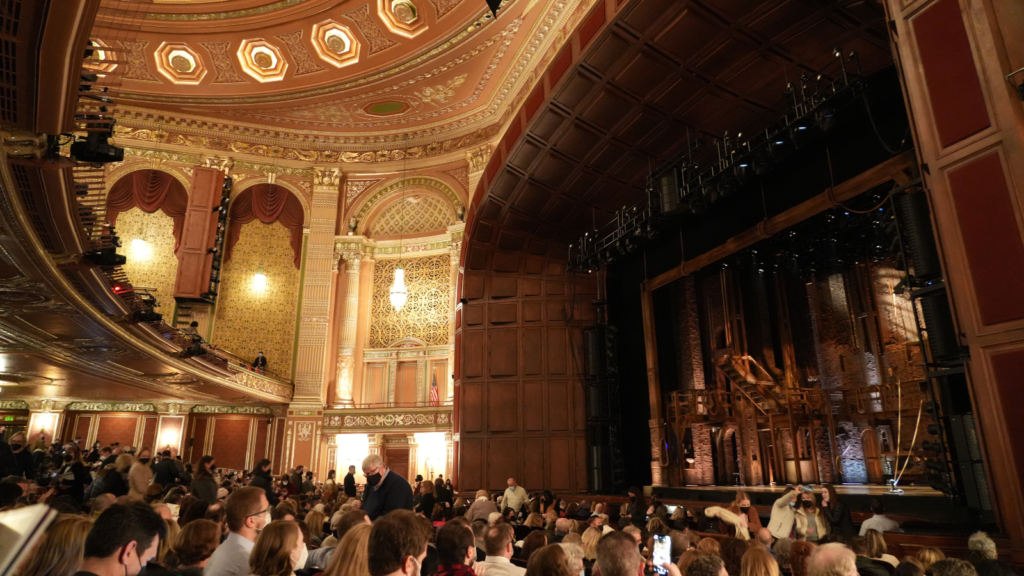Arts and culture organizations spend a lot of time and money developing marketing strategies that bring first-time ticket buyers in the door. And we do this diligently, even though studies have shown that more than half of this audience will never return. Too often, we market to one-time buyers the same way we market to everyone else—we add them to a mailing list, send them a thank you note and survey, and then let that generic marketing strategy take its course. These certainly aren’t bad tactics, but one-time buyers require a bit more targeted attention if you’re going to get them back for a second visit.
Focusing on first-time attendees and increasing your marketing effort to that segment will benefit your organization in two ways: increased retention and revenue. Getting patrons to come back for a second visit will start to establish loyalty, and that loyalty will help you retain them as customers. Understanding what kind of events they enjoy and knowing what days, times, and seats they prefer will enable you to do a more effective job of keeping your organization top of mind.
But loyalty is more than repeat ticket sales and retention. We know that repeat patrons will bring in additional revenue beyond subsequent ticket purchases because the more performances they attend, the closer they get to your mission, other patrons, and the staff in your organization that do the work that brings these patrons joy. When you create events that extend beyond the performance or tour, they become social occasions. These occasions lead to engagement that increases a patron’s value through donations, memberships, and advocacy. The financial and promotional benefits from these sources are worth far more than repeat ticket sales alone.
Here are five things you can do to turn first-time ticket buyers into subscribers, members, donors, and advocates:
1. Fine-Tune the Frequency and Relevance of Emails
You’re probably already sending email newsletters to all patrons on a schedule that makes sense for your organization, but you’re likely sending too many of them and sending the same message to every person on the list. If you want one-time customers to come back, it will take more than bombarding them with good programming; it will take efforts from you to show that you understand the early status of their relationship with your organization. Make sure the content you send to this segment is customized to their past purchase or whatever else you’ve managed to learn about them. Since it’s early in the relationship, don’t make them want to unsubscribe by sending too many emails or emails that they are less likely to act on.
2. Celebrate Special Occasions
It’s both easy and affordable to show these patrons you remember them by celebrating key moments in their lives or relationship with you. Even if it’s on their first visit, if you hear a patron is celebrating a birthday or anniversary, hand them a small token gift, like a refrigerator magnet or other branded item. They won’t forget it! Beyond that, you can send e-cards on special dates, like the anniversary of their first performance, or at holiday time, and you can offer them a small discount on their next purchase as a gift and incentive to return.
3. Show More Appreciation
Especially in the nonprofit sector, it’s not enough to just say thank you; you must show your thanks. This helps reinforce to buyers that their relationship with you is different from their relationship with, say, the local multiplex. A great way to do this is to invite first-timers to a special reception. Provide snacks and drinks, and take time to get to know them and introduce them to others. Especially in the arts and culture sector, this also gives you a chance to provide added value through pre or post-show educational sessions and performer meet-and-greets. More importantly, use this time to gently plant the seed that their relationship with you is more than just transactional and more than just entertainment. Make sure you tell them how their support ultimately benefits the larger community through educational programs, outreach, and other efforts that extend beyond the gallery, stage, or screen.
4. Engage With Patrons on Social Media
While audience trends on social media are in a dizzying state of evolution, it always makes sense to reshare posts about your programming, if possible, and to like or comment on posts about the performance they attended. While liking and commenting on individual posts can be difficult, a quick happy birthday message from your organization can go a long way. Paid social media advertising will also get you in their newsfeeds more regularly and increase the chance that you’ll grab a small piece of their attention.
5. Address Their Needs
Listening is the new talking; the more we listen, the more we learn. Nothing means more to a customer than feeling they have been heard and witnessing how you are taking their feedback to heart. When you send that first show thank you note, be sure to include a link to a BRIEF survey. If they complete the survey, acknowledge their efforts with a personal note in which you can respond to any negative issues quickly and compassionately. And it wouldn’t hurt to offer them a small unannounced discount or pre-sale opportunity to make the whole interaction feel more genuine.
Sure, these steps can add some time and cost to your marketing efforts, but marketing to your current customers, especially those one-time-only customers, is more important than marketing to new ones. Furthermore, the financial return on this investment is much higher than the return on the initial marketing efforts that got them in the door in the first place. Creating a patron journey map for several demographic groups of first-time ticket buyers will ensure that these folks remain in touch with you and feel they are part of something bigger than them. And that kind of connection will pay dividends far beyond the next show or season.

